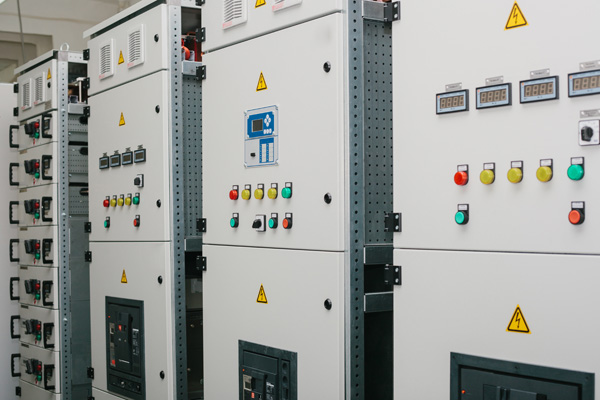1 (513) 921-9400
Crohm High Resistance Grounding Systems

High Resistance Grounding System Operation
During normal power system operation there is no fault current flowing through the resistor or power system. When a ground fault occurs the high resistance ground system will limit the fault current to a level that will not significantly damage the power system and immediately send an alarm signal to the user. The user can then activate a current pulse from the control interface that constantly cycles back-and-forth between a set current magnitude and zero. This allows the user to quickly trace and find the fault by using a hand held ammeter to follow the pulsing current to the ground point.
High Resistance Grounding Benefits
- Personnel Safety: Limits the Arc Flash Hazard to personnel who may have caused the fault or in the vicinity of the fault by up to 98 percent. A high resistance ground system also reduces the electrical shock hazard to personnel caused by stray ground fault currents that can flow back through a return ground path.
- System Protection: Offers protection by lowering and controlling fault current magnitude while providing a ground-to-neutral connection for a three-phase power system and still allowing operation as an “ungrounded system.” When the neutral of a system is not grounded, the system is vulnerable to damaging fault currents. High fault currents can thermally damage the power system by melting and even burning cable insulation, transformer and motor windings along with other critical equipment components.
- Ground Fault Detection: Instantly provides a warning when a ground fault occurs through an alarm signal. An optional audible horn or red warning beacon is available along with the standard change of state alarm contacts.
- Uninterrupted Service: There is no reason to immediately shut down the power system with a controlled and limited fault current, allowing for continued process operation and avoidance of costly downtime. Limiting the fault current of a single line-to-ground fault will also reduce the occurrence of a second fault from another phase.
- Transient Overvoltage Reduction: A high resistance grounding system reduces the magnitude of high transient over-voltages appearing during normal switching of a circuit with a ground fault. High transient over-voltages may cause component failure and equipment damage at locations on the power system outside of the fault point.
How to Specify a High Resistance Grounding System
Crohm offers a standard line of High Resistance Grounding Systems that are designed to meet your specific requirements. To order a system you must have the following information:
- System Voltage
- System Type – Wye or Delta
- Ground Falit Current
- Enclosure Type – Wall mount, Free standing, Indoor (NEMA 1) or Outdoor (NEMA 3R)
- Options or Special Requirements
Accessories and Options
- Ammeter with CT for the user interface
- Audible horn or warning beacon
- Timing and/or Under-voltage Relays
- Portable Clamp-On Ammeter with carrying case
- Special Paint Colors or All Stainless Steel Construction